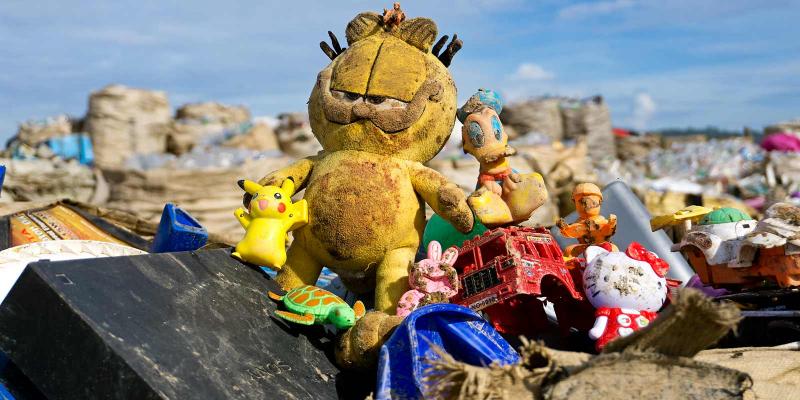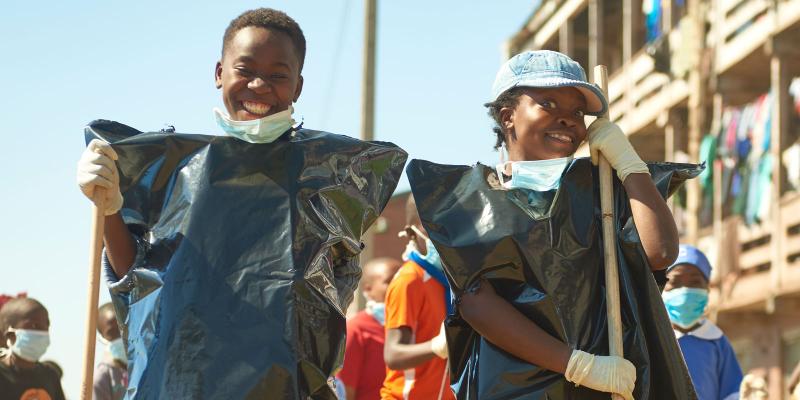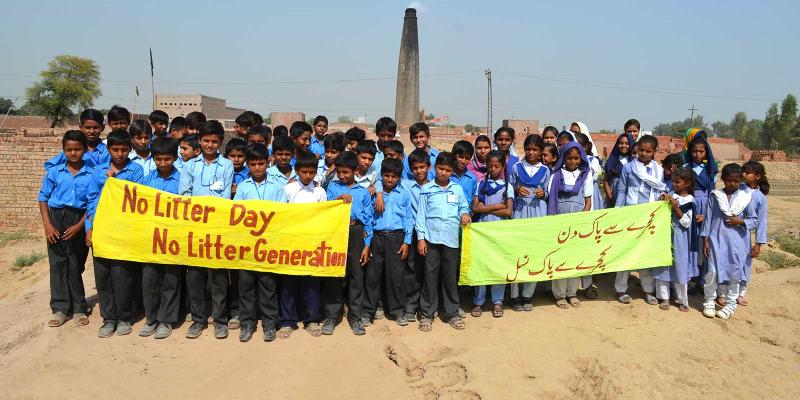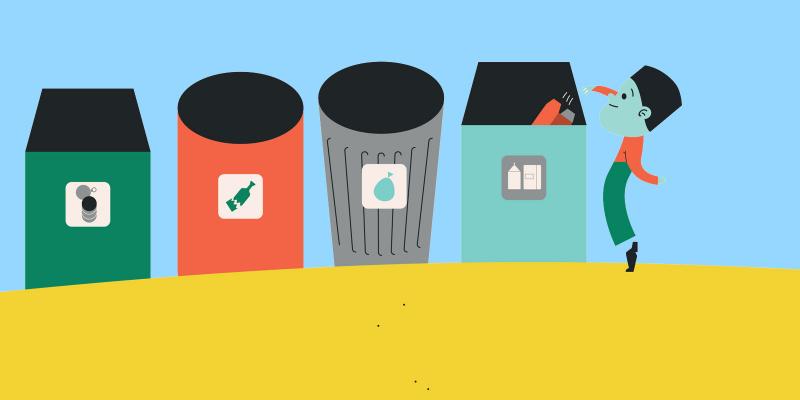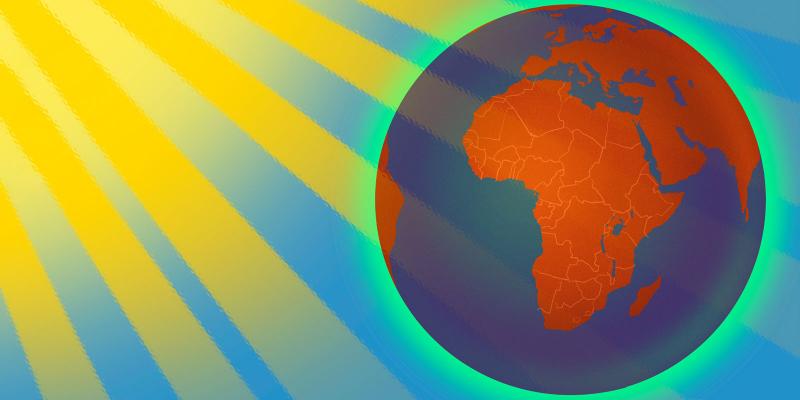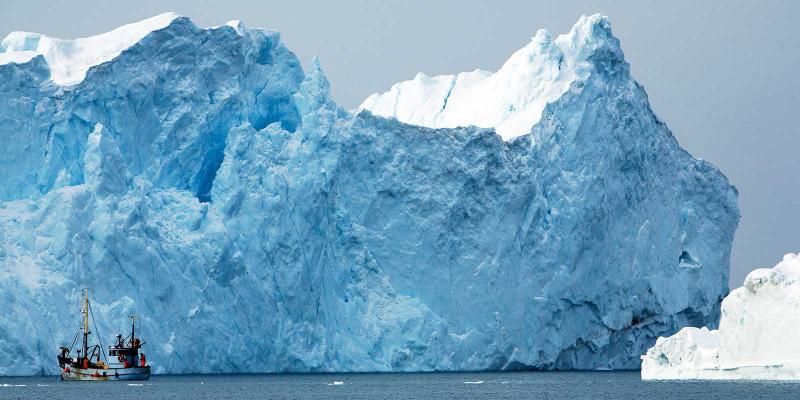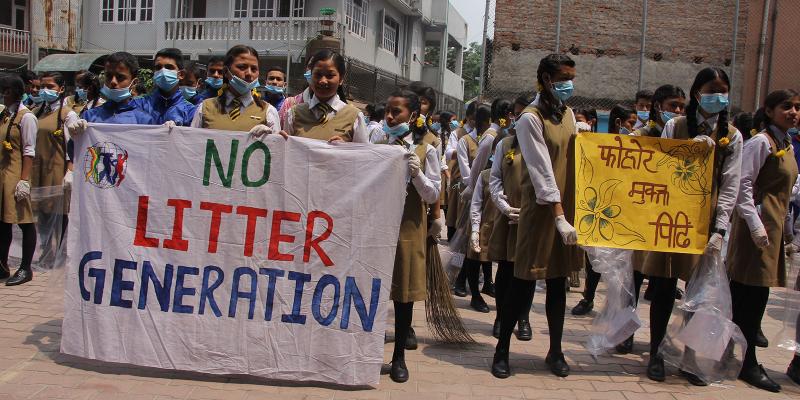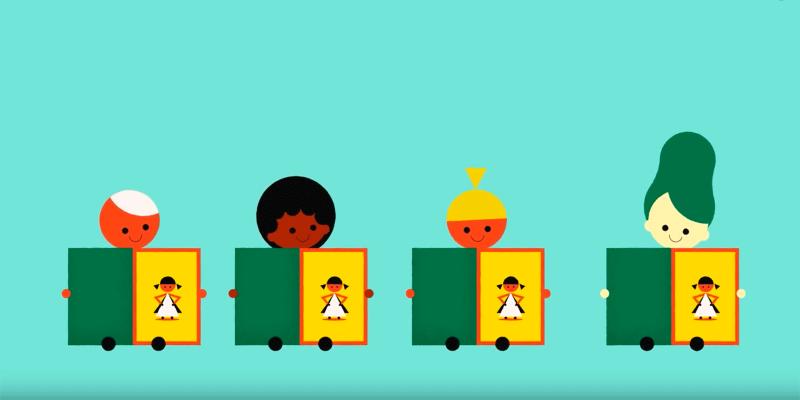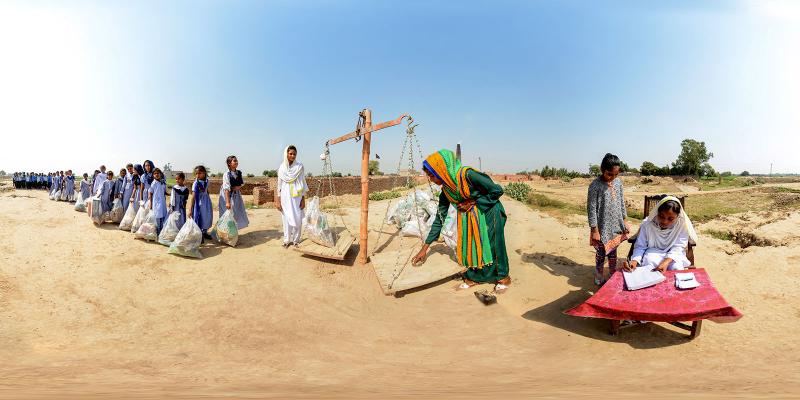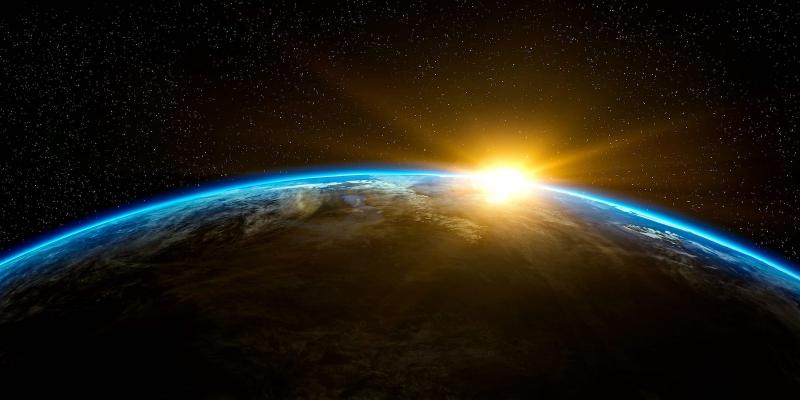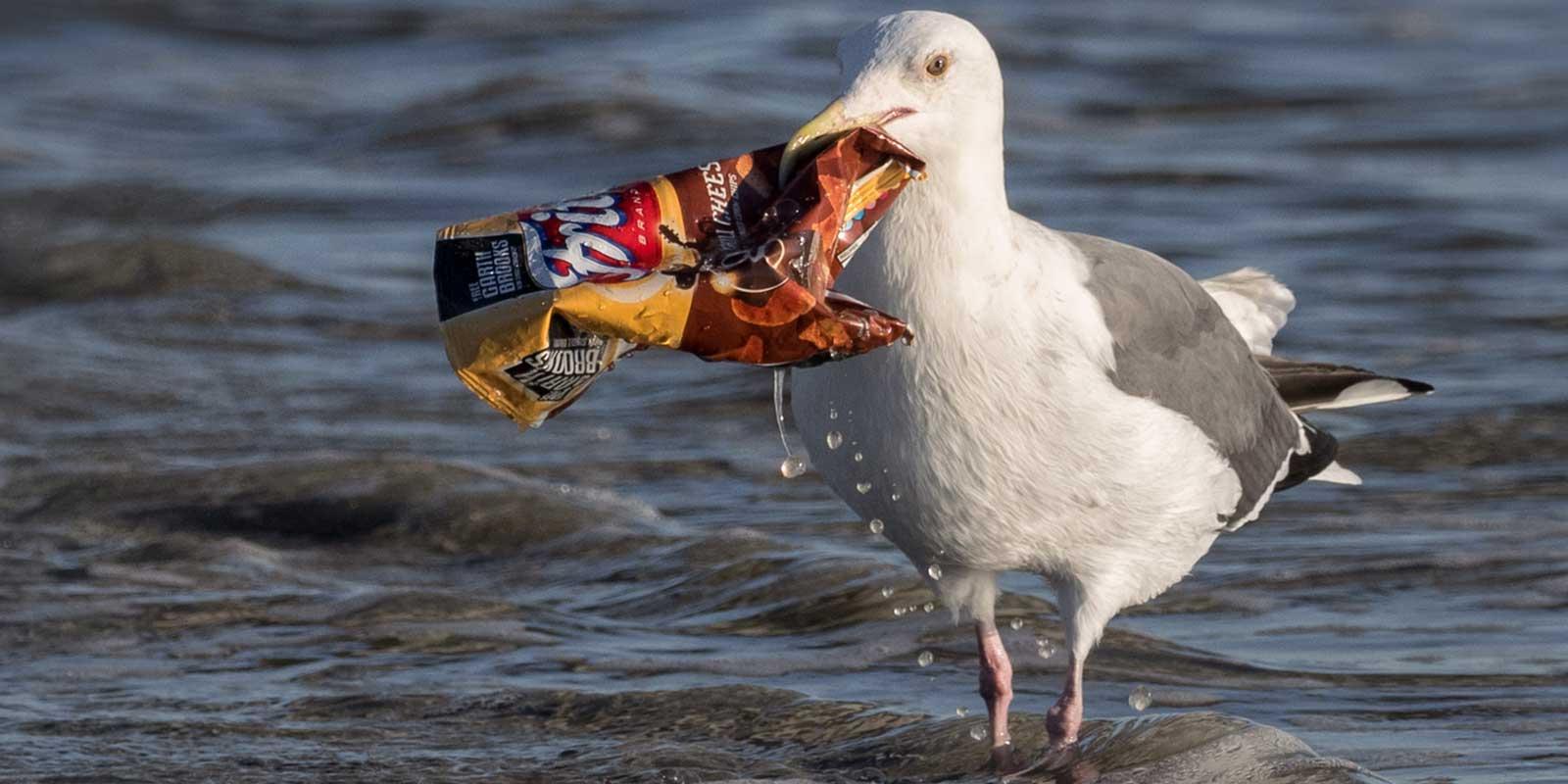
Litter is stuff that ends up on the ground or in lakes and seas, and that shouldn’t be there. It could be glass bottles, plastic bags, tins, cigarette butts or sweet wrappers. Both animals and people can injure themselves because of litter.
Some litter also contains hazardous substances that should not leak out into the environment.
25 million elephants- worth of plastic in the oceans There could already be 150 million tonnes of plastic litter in the world’s oceans. That’s the same weight as 25 million large elephants. If that many elephants stood in a line with their trunks outstretched, the line would be 200,000 km long. It would go round the world five times.
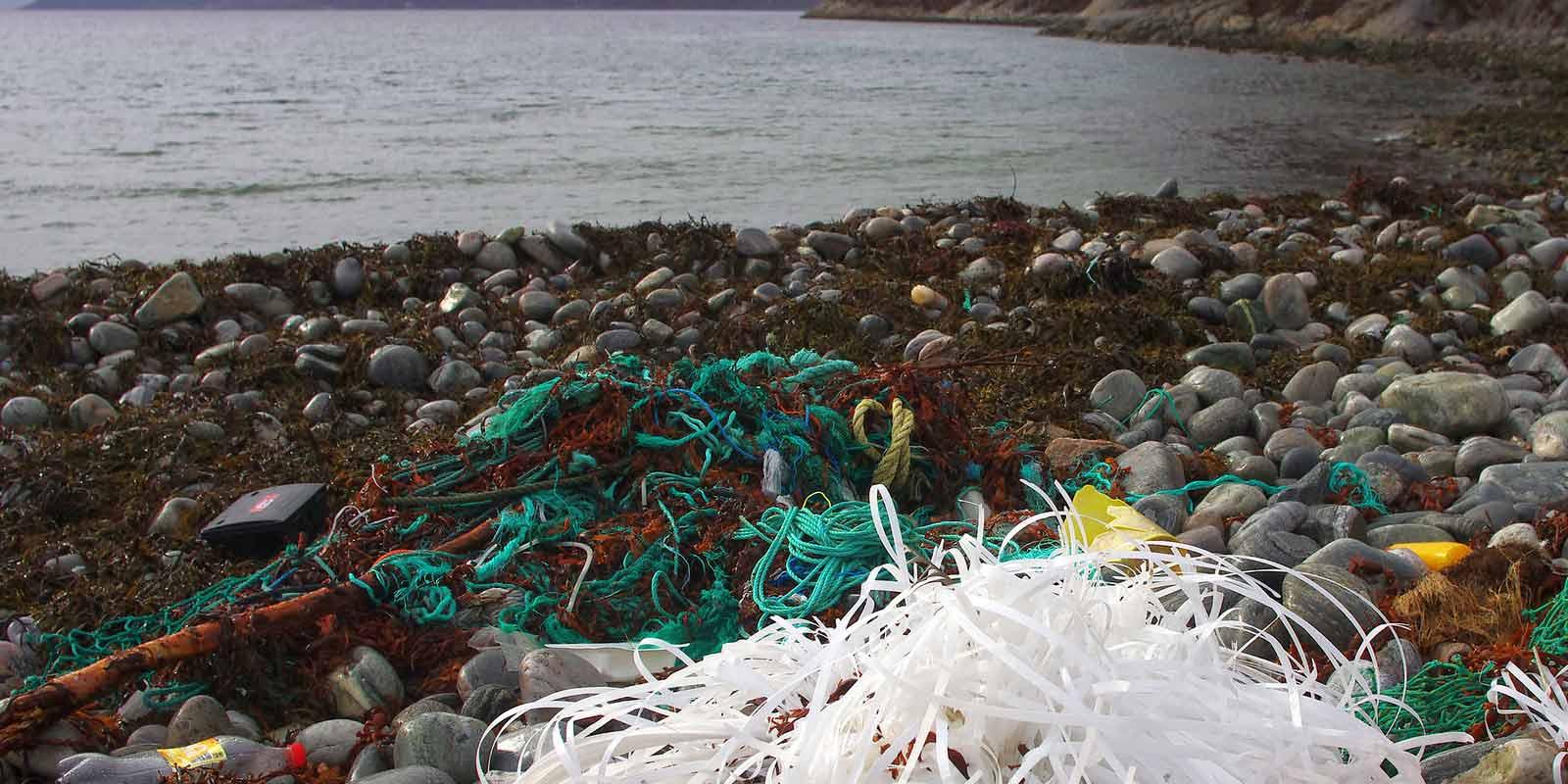
More plastic than fish in the water. Photo: Bo Eide
More plastic than fish ... Lots of plastic litter ends up in the world’s oceans. It can travel long distances on the wind or in rivers and rainwater. If we don’t do something about this, by 2050 there could be more plastic than fish in the world’s oceans!
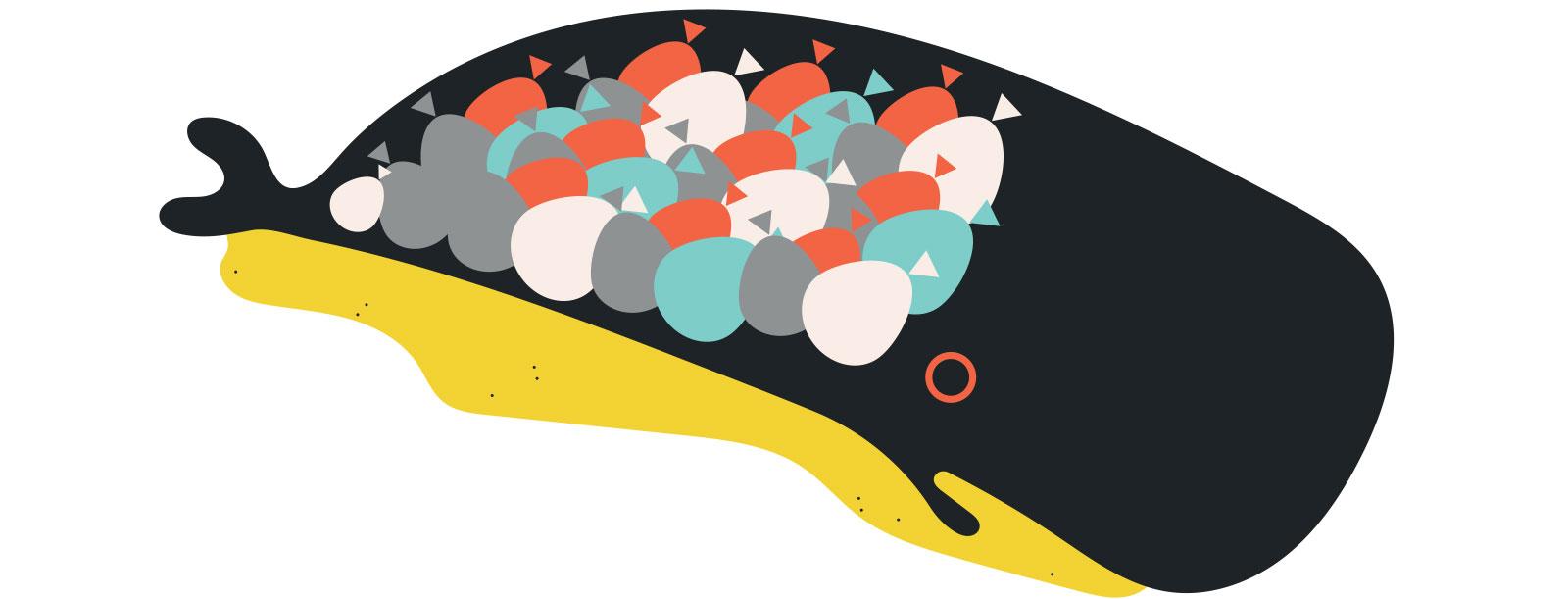
Whale swallowed 30 plastic bags • 8 million tonnes of plastic end up in our oceans every year. • The plastic injures over 600 species of animals that live in and by the sea. • A stranded whale in Norway had 30 plastic bags in its stomach.
Plastic doesn’t go away Plastic that ends up on the ground or in the sea breaks down into tiny pieces very, very slowly. This can take hundreds or thousands of years. Even really tiny bits of plastic (microplastics) can cause harm. Microplastics can be eaten by small organisms like animal plankton and clams. When these organisms are then eaten by larger animals, the plastic carries on up the food chain. In the end, the plastic may end up in the fish you eat for dinner. Researchers are trying to find out more about how animals and people are affected by eating microplastics.

4,500 billion cigarette butts reach the moon and back 117 times In the whole world, around 4,500 billion cigarette butts are chucked on the ground every year! If you line up all these cigarette butts, the line would be 90,000,000 kilometres long. That’s as far as travelling to and from the moon 117 times. It takes about three years for a cigarette butt to break down to such tiny pieces that it can’t be seen. But even tiny pieces can do damage.
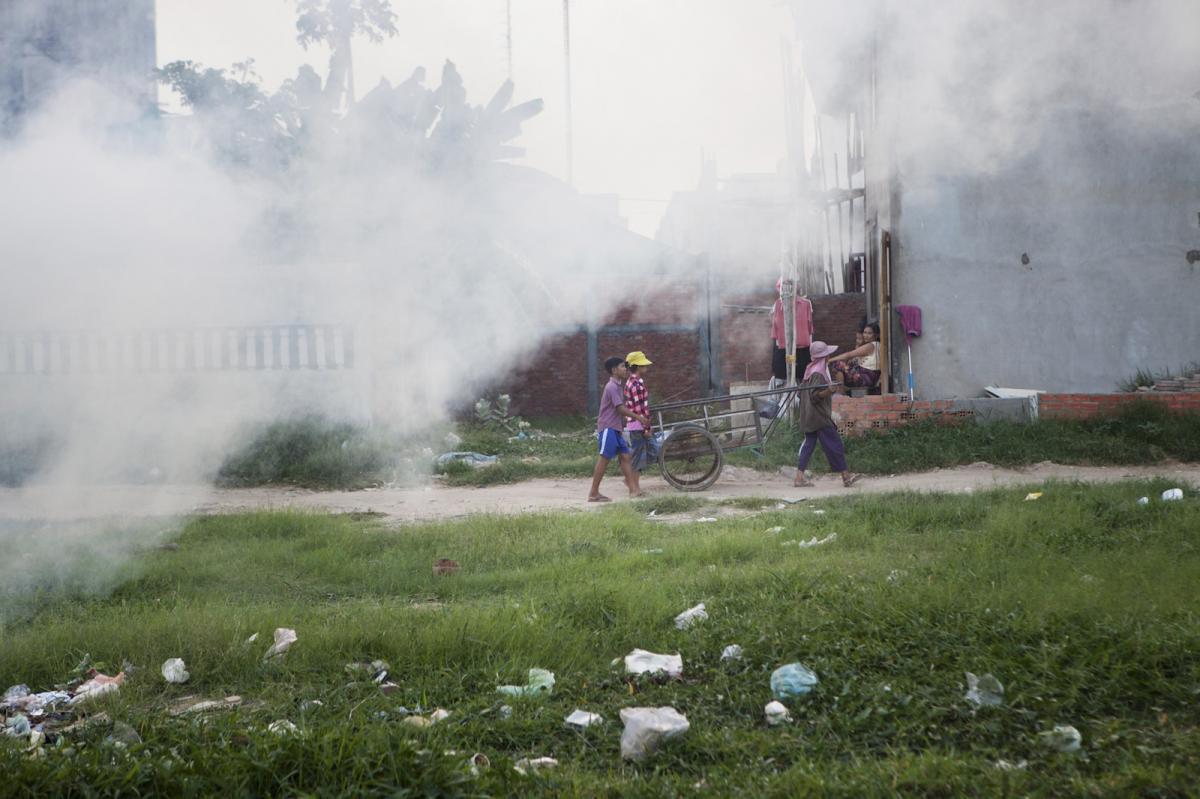
Litter costs money
It’s hard to work out how much littering costs all around the world. Many coun tries invest lots of resources in cleaning and picking up litter, but it’s cheaper to deal with the litter properly right from the start. Waste that can be recycled or burned should be placed in special rubbish tips, where it does as little damage to the environment as possible. But many people are careless and throw things away in the wrong place. Materials that should be recycled end up with rubbish that will be burned and a lot ends up as litter on the ground. This is a waste of Earth’s resources because so many things could be used several times over.When waste is thrown away thoughtlessly, it can cause harm to both animals and people. For example, diseases are spread through faecal matter and needles. A lot of waste also contains hazard ous substanc
Långgatan 13, 647 30, Mariefred, Sweden
Phone: +46-159-129 00 • info@worldschildrensprize.org
© 2020 World’s Children’s Prize Foundation. All rights reserved. WORLD'S CHILDREN'S PRIZE®, the Foundation's logo, WORLD'S CHILDREN'S PRIZE FOR THE RIGHTS OF THE CHILD®, WORLD'S CHILDREN'S PARLIAMENT®, WORLD'S CHILDREN'S OMBUDSMAN®, WORLD'S CHILDREN'S PRESS CONFERENCE® and YOU ME EQUAL RIGHTS are service marks of the Foundation.



